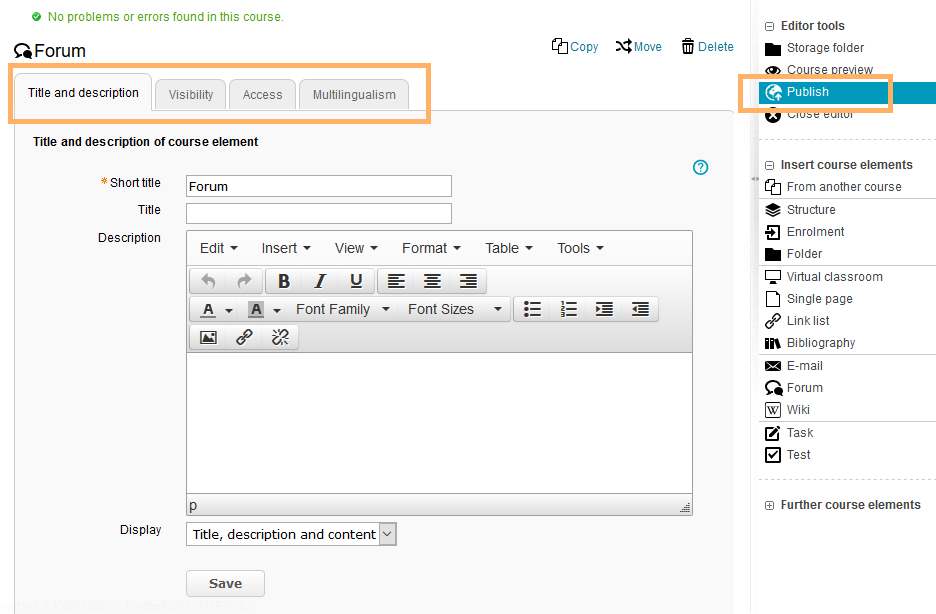LTI-Tool
Usage: Learners' View
If you open the course element LTI Tool , the content will directly be displayed in the course content area. Alternatively, depending on the configuration of the tool by the author, it might also be the case that the button Open in new window pops up.
Clicking this button will open the external learning application in a new browser tab. In the background, necessary login and user data will be safely submitted to and evaluated by the integrated learning application according to the author's configuration.

Usage: Authors' View
The following functions are available to you in the course editor:
Add a course element LTI-Tool
General configuration settings
In the course editor, you will find the following configuration tabs:
Title and description | |
|---|---|
Visibility | You can restrict the visibility of the course element, if necessary. Further information can be found in the section Visibility. |
Access | If needed, you can also restrict the access of the course element. Further information can be found in the section Access. |
Configuration | Here you can configure the LTI tool. You can either select the LTI version and then, if applicable, a central LTI tool already stored for your institution or make your own settings to connect an individual LTI tool. Detailed instructions are given on this page Konfiguration. |
| Assessment | In this tab, you can make various basic configuration settings for the assessment which will affect the assessment form and the information displayed for the assessment in the course run. Find more information on this at Assessment (LTI). |
Multilingualism | In this tab, you can add different translations to individual course element areas. |
In the course view, you can use the same functions as learners.




